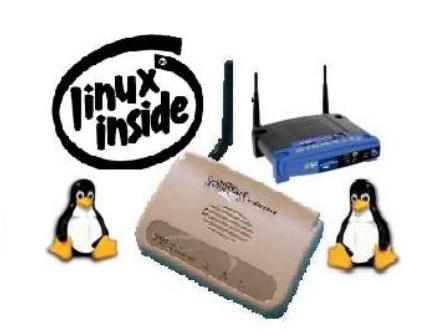 The
University of Adelaide
Home |
School EEE
The
University of Adelaide
Home |
School EEE 

ELEC ENG 4039A/B
FINAL YEAR HONOUR PROJECT
OPTIMISATION WLAN FOR BROADBAND ACCESS

Related Link
Optimisation Approaches
Dynamic Channel Switching (DCS)
Having said that noise level can cause by receiver noise or environment noise or interference from other devices operating at the same frequency. One of the possible ways to overcome this noise problem is to dynamically switch channels in that frequencies range until finding the good SNR value ultimately a good link quality. The channel switching is feasible because IEEE802.11standard use Direct Sequence Spread Spectrum (DSSS) and there is Linux wireless tools can be used to implement this approach.
Dynamic Channel Switch (DCS) will switch the channel dynamically according to reference values which are ping statistics and link quality respectively. PING command is a useful tool to identify if the host is alive or not. It tests the remote host by sending Internet Control Message Protocol (ICMP) “echo request packets” to host’s address and listening to the replying “echo response” ICMP. PING will show the number of packer transmitted and received, hence the percentage of packet loss, TTL and others. Thus the percentage of packet loss could be extracted from PING statistics so that the host’s status and link quality between host and access point can be determined.
iwconfig is one of the command from wireless tools. The link quality can be extracted from iwconfig. This value is a good indicator to determine if the link quality of current channel is good or not. If the link quality is less than a reference value, say 65 then the AP should switch to other channel according to the design. The detail of design and implementation could be found at here.
Dynamic Changing Fragmentation Threshold
It is important to understand that the optimisation is done at data link layer, the frame includes fragment in other upper layers. Subsequently, smaller fragmentation threshold can limit the packet loss but increase the overhead. Larger fragmentation threshold reduce overhead but cause the end- to –end delay because of increase in collision. Therefore, adjusting the fragmentation threshold is important. According to the work done by Sylinda Zhou, hill climbing method was used to find the optimum fragmentation threshold. This method again used in the project as it met the specifications because Access point’s RAM also limited to 8MB. If the size is not a constraint, exhaustive search method could be used.
Hill Climbing method is one of the network optimisation methods. The idea of hill climbing was that the search would start by randomly pick a point in search space. Then consider all the neighbours of the current state. After that, it compares and chooses the neighbour with best quality and move to that state. This procedure will keep looping until the search was reach to the state where all other neighbours’ states has lower quality compare to the current one. For better understanding of this algorithm, illustrates clearly how this method works.
The optimum fragmentation threshold was found by referring to the maximum value of link quality. The detail of the design and implementation could be found at here.
More Information
Factors Effect on WLAN Performance
Influence of some configuration parameters in WLAN Performance
Back HOME
Copyright © The University of Adelaide 2006
Copyright | Disclaimer | Privacy
